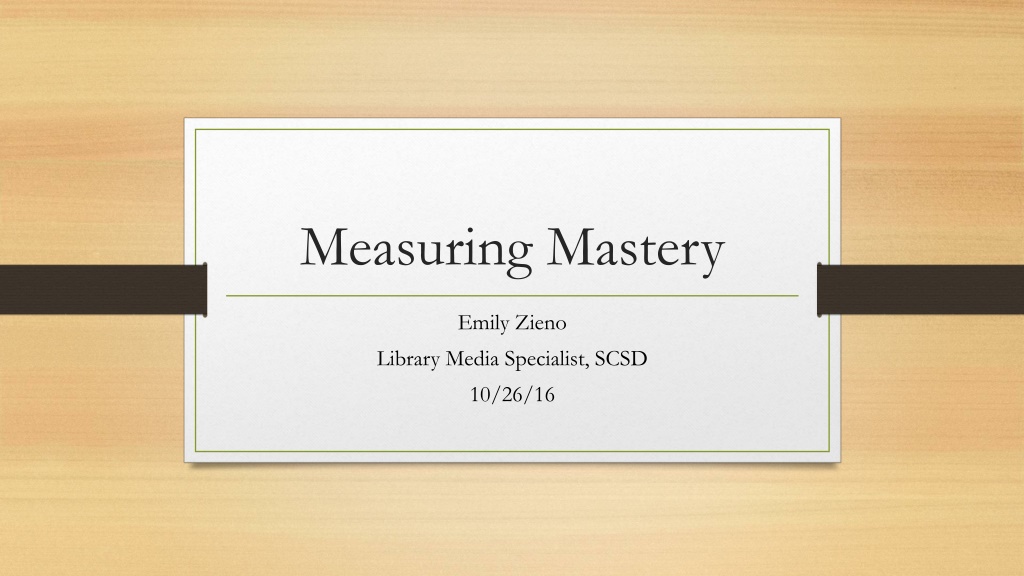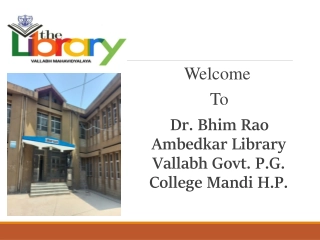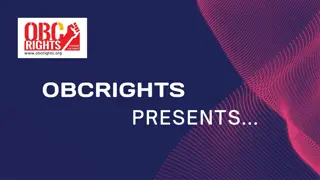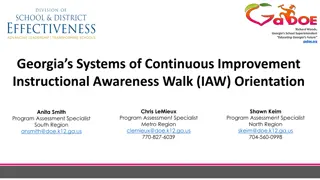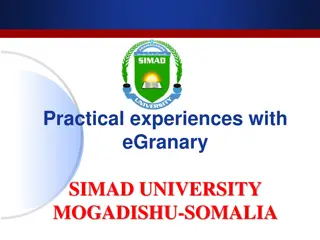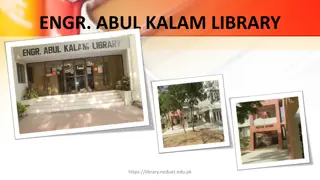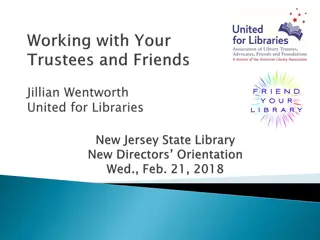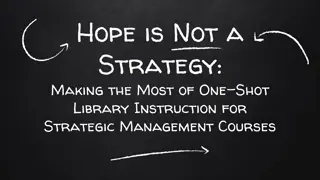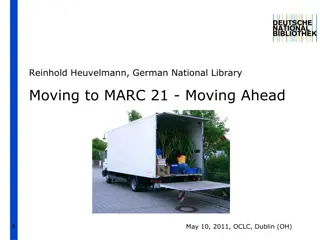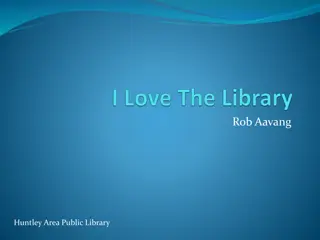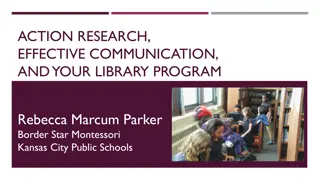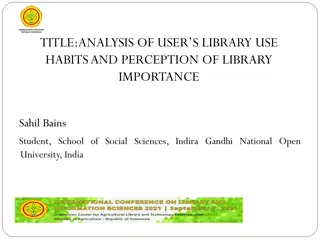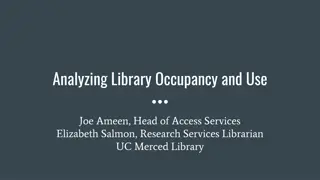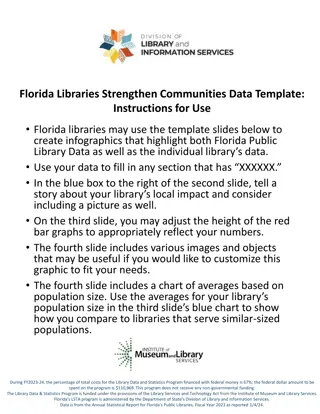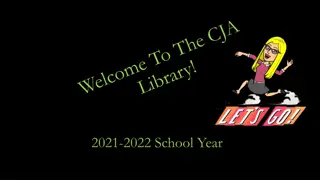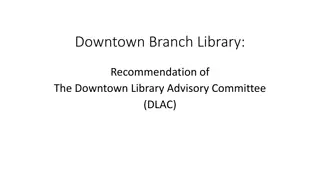Enhancing Library Instruction Through Data-Driven Approaches
Emily Zieno, Library Media Specialist at SCSD, emphasizes the importance of using data to inform instructional decisions for providing engaging and differentiated lessons in the library. She outlines the process of creating assessments, collecting various forms of data, and utilizing tools like Castle Learning for student assessments. By focusing on grade-level skills and continuous formative assessment, Emily strives to help students master key benchmarks while instilling a passion for reading.
Download Presentation

Please find below an Image/Link to download the presentation.
The content on the website is provided AS IS for your information and personal use only. It may not be sold, licensed, or shared on other websites without obtaining consent from the author. Download presentation by click this link. If you encounter any issues during the download, it is possible that the publisher has removed the file from their server.
E N D
Presentation Transcript
Measuring Mastery Emily Zieno Library Media Specialist, SCSD 10/26/16
Introduction Library Media Specialist @ Clary Middle School, SCSD, 7 years Creating Assessments, Collecting Data, Analyzing Data for Instructional Decisions, and Storing Data Philosophy of role of LMS Balance between providing good instruction and instilling a passion for reading
What is good instruction in the library? Engaging lessons that focus on grade-level benchmark skills from the Empire State Information Fluency Continuum (IFC), using content from collaborating teacher/content area Follow the I do/We do/You do model of teaching and learning Differentiated based on data, specific needs of each student Data is collected many times a year, in several different formats, for progress monitoring purposes and allows the LMS to analyze data to make decisions about how to effectively teach each student Instruction looks different almost every day!
Creating assessments and collecting data Multiple opportunities and formats of assessment Tests All students at Clary will take a library skills assessment 3 times a year (Sept/Oct, Jan/Feb, and May/June) using Castle Learning. Student self-assessment Pre and Post Project Self-Assessments The post project assessment is part of the self-reflection process. These pre and post project assessments are taken using pen and paper and results are stored in student folders. Daily TOD s (Ticket Out Door) Authentic assessment Within projects, assessment of skills as they naturally occur in the Stripling Model of Inquiry process. Grades using rubrics, analyzing notes for a specific skill, etc. Continuous formative assessment Informal, while teaching mini-lessons
Other Useful Data STAR Assessment Use to determine lexile level for articles Possible groupings for some skills Miscellaneous IEP Behavior Plans Learning Style information
What does a library skills assessment look like? Created by LMS using Castle Learning Combination of assessing ability to solve problems using actual grade level priority IFC benchmark skills AND assessing student s confidence in his/her level of understanding or mastery of this skill Both pieces of data are important to me At times, there exists a disconnect between a student s own recognition of mastery of a skill and the actual mastery of a skill. This is important because if a student is not aware that a problem exists, I must address it with him/her. Goal- Over a school year, students should show growth and mastery of each of the IFC priority benchmark skills.
Library Skills Assessment Demonstrate Castle Learning test
What does the self-assessment look like? Pre/Post project self-assessments AND daily TOD s (Ticket Out Door) Assessment of specific IFC benchmark skills being taught within the project and within each day Asking for student to reflect on his/her ability level of each skill, using student friendly language TOD Students use shapes to correspond to : I don t understand (I need a conference), I m getting there (Please check in with me tomorrow), I understand (I ll ask for help if I need it), or I m an expert (I m all good and can help someone else who is struggling) Also asks for student explanation- Why did you choose this shape? Explain your thinking. Pre/Post project self-assessment Students circle one of the four options (expert/understand/getting there/don t understand) Comments section- used for teacher to express information (Pre- specific helpful feedback, Post- mastery) Low risk opportunity for students to honestly communicate with me about their learning LMS- look at these every day and, combined with other data, make decisions for next day instruction
What does the authentic assessment look like? Within each phase of the inquiry process, students will be demonstrating a benchmark skill, to be assessed while the project is underway Set expectations and model what mastery of each skill looks like Use rubrics where appropriate Use student work- notes, graphic organizers, etc. to assess skills Also use observation to assess skills Authentic assessment data is recorded in the Comments section Meaningful, specific feedback is always given in a timely manner
What does continuous formative assessment look like? While teaching, various methods are used to gauge student understanding of material being taught Methods of eliciting student feedback Questioning Silly things to elicit response (hands on head if you think or hands on knees if you think ) Thumbs up/ thumbs down Dry erase boards or signal cards Shapes on TOD Observation What do I see specific kids struggle with? What strengths do specific kids have?
What does the data look like? Overall data Individual data Information for conferencing Offering feedback Create specific groupings, create specific activities based on data Combination of ALL pieces of data that inform and drive instruction Whole group instruction Helps me reflect on teaching practices/lessons Do I need to reteach a specific skill? Present information a different way?
More assessment?! Ugh Data driven instruction requires meaningful assessment in order to effectively: Get to know my kids better! Differentiate instruction Create like groups or mixed groups that continually change Pull small groups for re-teaching purposes Conference with individual students Creates a confidence with students- they know instructional choices are deliberate
Create/Collect/Analyze/Store Data Create assessments? Check! Collect data? Check! Analyze data? Check! Store data? How do I do that?
Student Folders Student work Assessment results Benchmark Tracking Sheet- list of all IFC benchmark skills for grade level Skills are checked off when mastery has been achieved By end of year, ALL skills should be checked off Goal #1- Demonstrate mastery of each IFC priority benchmark skill Goal #2- If students demonstrate mastery, then students must be challenged and instruction must reflect the need
Bulletin Board Each grade level has listed all IFC priority benchmark skills, using the Stripling Model of Inquiry Post additional signage when skill has been taught through a specific project Visual for students I have learned this skill Visual for staff- LMS teaches the inquiry process with specific benchmark skills and is an educator
Real examples- Student perspective Library skills assessment 3 times a year on Castle Learning Every time I go to the library for a project, I take a pre/post project self- assessment of the benchmark skills being taught for that particular assignment. I fill out a ticket out the door every day, where I rate my learning, based on the skills being taught. I m also assessed based on rubrics and teacher observation. My student folder houses all of my work created in the library, as well as my benchmark tracking sheet, to keep records of the skills I have mastered.
Real examples- LMS perspective LMS creates a library skills assessment on Castle Learning and administers to all 6-8 students through SS classes LMS creates pre-assessment based on selected benchmark skills we will be working on (1 per each phase of the inquiry process) LMS analyzes initial library skills assessment, pre-project self- assessment (and other miscellaneous data) to make some initial instructional decisions Mini lessons throughout the project on each skill Anchor charts with explicit processes and help, agenda/objectives/etc. posted Typically, whole group instruction (I Do / We Do / You Do) then LMS pulls a small group to work with on particular skill while others are independently working OR student-led small groups AND/OR individual conferences and check-ins Groupings continually change based on skill and task, using data (like or mixed) Student leaders in the room based on skill we are working on (Tech Support group, Perfect Paraphrasers, etc.) selected to lead class while LMS works with small groups or individuals specific procedures for this Learning looks different for students at different times (students with highlighters reading a printed article, students online with headphones listening and reading to an article, students evaluating websites to find a reliable article, students with graphic organizers, etc.) High expectations for all students- challenge and push themselves Specific procedures for everything Daily Ticket Out the Door AND student work produced that day gives LMS more data to analyze and flex plan for following day LMS analyzes data from all 3 of the library skills assessments as a way to evaluate instructional piece of the library program
What Gets Differentiated? Level and complexity of content Pace Scaffolds and Supports Student Work Activities Differentiation applies to all students (students who struggle, students who need more challenge) Examples: tiered instruction, centers, scaffolds, etc.
Positive Outcomes For administrators Instructional piece of the library program is very focused and strong Evidence of teaching and learning happening in the library For LMS/Students Data has become a powerful communication tool between LMS and students Student involvement = engagement, awareness and ownership of learning and work in the library Portfolio of student work to show progress and growth Instruction is differentiated/targeted and data driven, based on student needs Data allows me to be more thoughtful and reflective of my teaching practices and lessons Allows for meaningful vertical conversations- better transitions between schools
Bottom Line Data = Opportunities BUT, you have to not only create assessments and collect data You also need to analyze it and base instructional decisions and strategies around it (and store it to track short-term project goals and long-term school career goals) By doing this you are honoring each student as an individual learner and doing your very best to meet their needs!
Questions/ Comments/ Ideas Contact information: Emily Zieno ezieno@scsd.us
